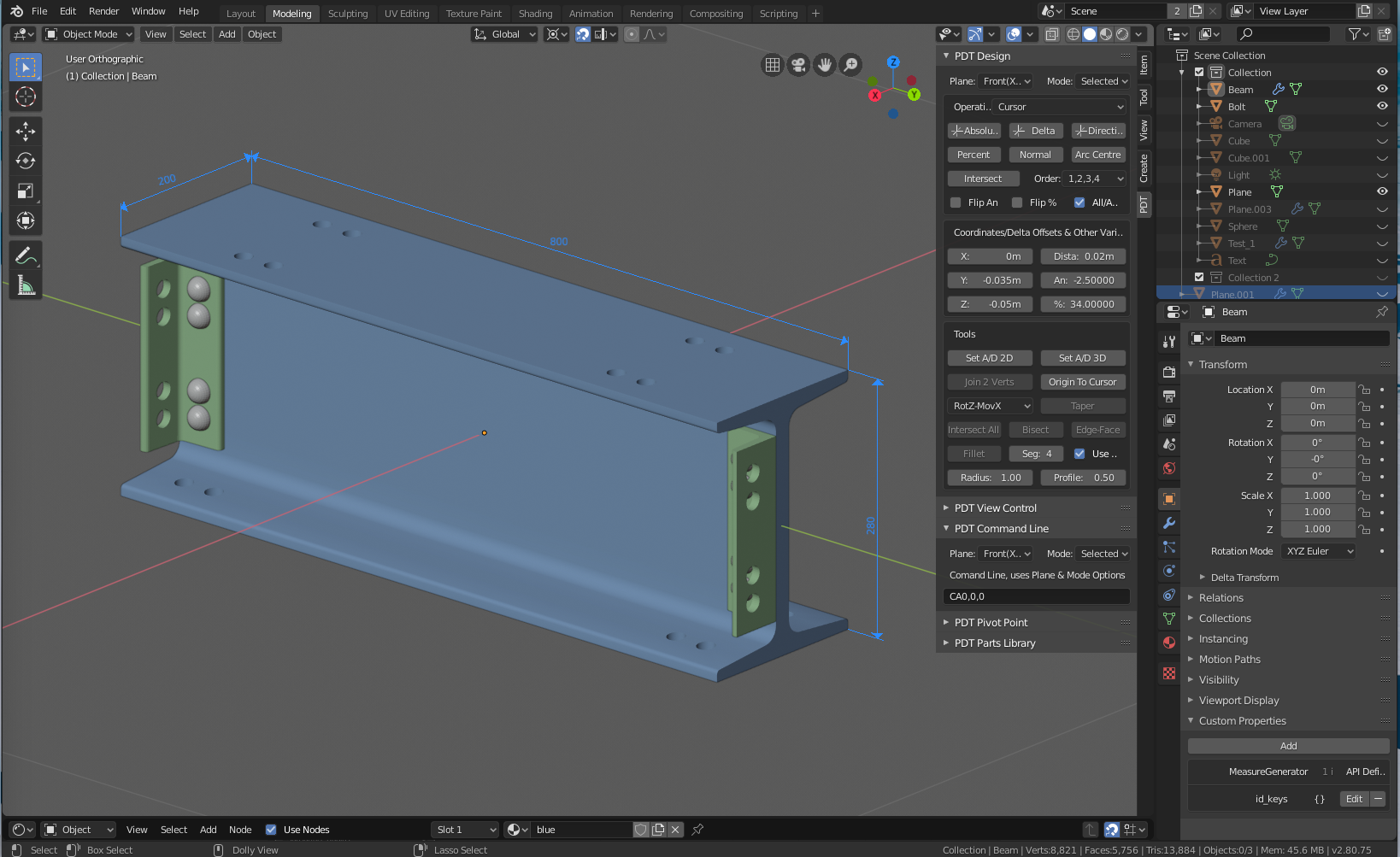Introducción#

Objetos dibujados con PDT y dimensionados con MeasureIt
PDT está diseñado para funcionar con Blender 2.8 y todas las versiones posteriores. No existen versiones de PDT para versiones anteriores de Blender.
El objetivo clave es hacer que el modelado de precisión sea más fácil y capaz en Blender, para permitir que diseñadores 3D de todos los géneros puedan modelar de forma precisa.
Observación#
Definitivamente existe una diferencia en la forma en que trabajan los «diseñadores CAD» y los «modeladores poligonales». Los modeladores poligonales, el usuario tradicional de Blender, tenderán a comenzar con una malla primitiva básica en 3D, tal como un Cubo o un Cilindro, luego comenzarán a agregar bucles de bordes para ir cortándola para extruir secciones y hacerla más compleja, para luego agregar «huecos» y trabajar con éstos. A menudo usarán modificadores de Subdivisión para hacer que el modelo sea más detallado; mientras que los diseñadores CAD considerarán este método de trabajo en gran parte inadecuado y con una precisión reducida. Esto significarán más vértices en la malla, con respecto a un modelador CAD, aunque probablemente sea lo mismo después de que se haya tenido todo el conjunto en cuenta.
CAD modelers would virtually never trace off a previous drawing, or photograph to model something, they will always work from quoted dimensions only. To this end think about a drawing at a scale of 50:1 - a line of width 0.5mm is effectively 25mm thick in the real world. Many drawings carry the mantra «Do Not Scale» - this is for a reason, old tradition hand-drawn drawings are not necessarily accurately drawn in the first place!
Traditional CAD Designers (I am using the term «CAD» for what is considered to be Computer Aided Design, products like SolidWorks, AutoCAD, MicroStation, etc.) tend to make an accurate flat loop, like the front of a bracket, or wall of a building , then extrude, or «loft» this into a 3D mesh. It has long been considered that this approach leads to more accurate models that could, for example, be used in 3D printing.
PDT aims to introduce this method of working into Blender, for the benefit and inclusion of all genres of CAD Designers and to augment the tools for the Polygon Modeler. It has been developed by a former Mechanical Design Engineer with many years experience in drawing offices, using hand drawing and CAD techniques.
Nomenclatura#
There is also the situation where CAD Designers and Polygon Modelers use different terms, like Absolute versus World coordinates, Delta versus Incremental, Directional versus Polar. Primitives themselves are also named differently, Vertices, Edges & Faces versus Points, Lines & Polygons - PDT takes care of this by providing a file that users can edit to input their own terms, including their own languages.